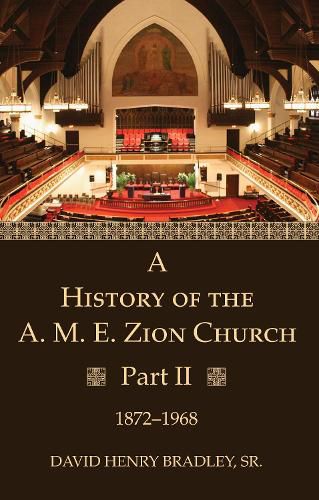Readings Newsletter
Become a Readings Member to make your shopping experience even easier.
Sign in or sign up for free!
You’re not far away from qualifying for FREE standard shipping within Australia
You’ve qualified for FREE standard shipping within Australia
The cart is loading…






This title is printed to order. This book may have been self-published. If so, we cannot guarantee the quality of the content. In the main most books will have gone through the editing process however some may not. We therefore suggest that you be aware of this before ordering this book. If in doubt check either the author or publisher’s details as we are unable to accept any returns unless they are faulty. Please contact us if you have any questions.
In this second volume, David H. Bradley picks up the story of the African Methodist Episcopal Church Zion in 1873. From there he follows A. M. E. Zion’s growth through Reconstruction, Jim Crow, and the Civil Rights Movement, showing the denomination’s special capacity for empowering lay people to be crucial to African American organization in the Civil Rights Movement. Throughout, Bradley explores the dynamics of organizational institutionalization in the midst of new growth and transformation through the Great Migration and the flowering of A. M. E. Zion churches in new African American communities on the West Coast.
$9.00 standard shipping within Australia
FREE standard shipping within Australia for orders over $100.00
Express & International shipping calculated at checkout
This title is printed to order. This book may have been self-published. If so, we cannot guarantee the quality of the content. In the main most books will have gone through the editing process however some may not. We therefore suggest that you be aware of this before ordering this book. If in doubt check either the author or publisher’s details as we are unable to accept any returns unless they are faulty. Please contact us if you have any questions.
In this second volume, David H. Bradley picks up the story of the African Methodist Episcopal Church Zion in 1873. From there he follows A. M. E. Zion’s growth through Reconstruction, Jim Crow, and the Civil Rights Movement, showing the denomination’s special capacity for empowering lay people to be crucial to African American organization in the Civil Rights Movement. Throughout, Bradley explores the dynamics of organizational institutionalization in the midst of new growth and transformation through the Great Migration and the flowering of A. M. E. Zion churches in new African American communities on the West Coast.